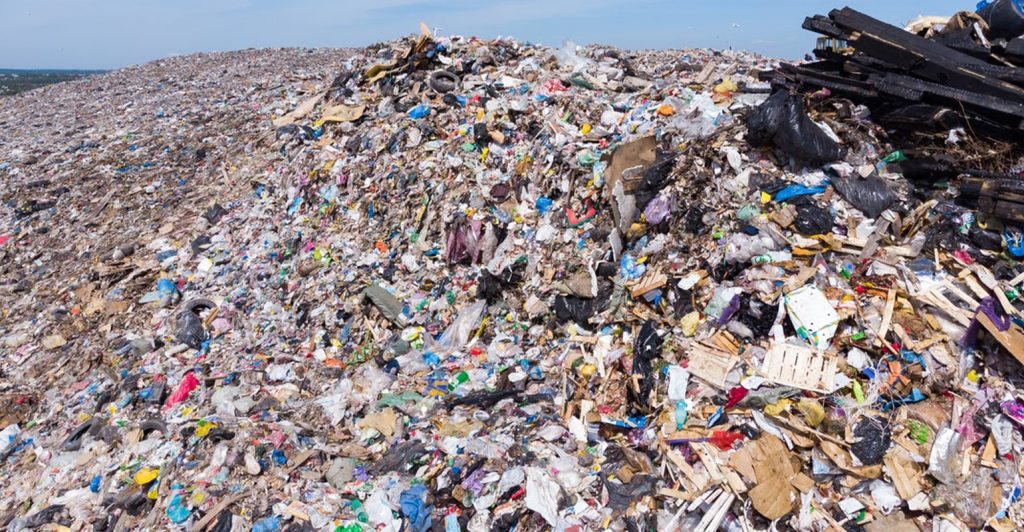Lowest prices in Cincinnati with no hidden fees.
Get a free consultation, call us now at: 513-854-7408.
Friendly junk removal expert customer service staff.
We always deliver and pickup fast and on time.
We are a local family business in Cincinnati, OH.
Ohio, located in the Great Lakes region of the United States, is the 34th largest state in the country, with a population of over 11 million people. With such a large population, there is a need for proper waste management systems. Landfills are the most common method of waste disposal in Ohio, and they play a significant role in the state’s waste management system.

History of Landfills in Ohio
Landfills have been in use in Ohio for over 100 years. The first landfill in Ohio was established in 1907 in Cleveland. Before the introduction of modern regulations, landfills were unregulated and often located in residential areas, leading to environmental and public health concerns. In 1969, Ohio passed the Ohio Solid Waste Disposal Act, which established regulations for the management of solid waste in the state. This law required all landfills to obtain permits and meet specific design and operating criteria to prevent environmental pollution.
Regulations for Landfills in Ohio
Ohio has some of the strictest landfill regulations in the country. The Ohio Environmental Protection Agency (OEPA) is responsible for regulating landfills in the state. Landfills in Ohio must comply with both state and federal regulations, such as the Resource Conservation and Recovery Act (RCRA) and the Clean Air Act.
To obtain a permit to operate a landfill in Ohio, the landfill must meet specific design and operating criteria. These criteria include site selection, landfill design, groundwater monitoring, leachate collection and treatment, air emissions control, and closure and post-closure care. Landfill operators must also have financial assurance to cover the cost of closure and post-closure care.
Types of Landfills in Ohio
There are several types of landfills in Ohio, including municipal solid waste (MSW) landfills, industrial landfills, and construction and demolition (C&D) landfills.
Municipal solid waste (MSW) landfills are the most common type of landfill in Ohio. These landfills accept household and commercial waste, such as food scraps, paper, and plastic.
Industrial landfills are designed to accept waste from manufacturing and industrial processes. These landfills may accept hazardous waste, such as chemicals, oils, and solvents.
Construction and demolition (C&D) landfills accept waste generated from construction and demolition activities, such as concrete, wood, and asphalt.
Impacts of Landfills in Ohio
Landfills can have significant environmental impacts if not managed properly. The most significant impacts include groundwater contamination, air pollution, and greenhouse gas emissions.
Groundwater contamination can occur if leachate from the landfill seeps into the groundwater. Leachate is the liquid that results from rainwater and waste decomposing in the landfill. To prevent groundwater contamination, landfills must have a liner system to collect and treat leachate.
Greenhouse gas emissions from landfills are a significant concern. When waste decomposes, it releases methane and carbon dioxide into the atmosphere. Methane is a potent greenhouse gas that is 25 times more potent than carbon dioxide. To reduce greenhouse gas emissions, landfills can implement practices such as waste diversion, which involves diverting waste from the landfill to recycling or composting facilities.
Landfills play a significant role in Ohio’s waste management system. They are essential for disposing of waste generated by households, businesses, and industries. However, landfills can have significant environmental impacts if not managed properly. Ohio has some of the strictest landfill regulations in the country to ensure that landfills are designed, operated, and closed in a way that protects the environment and public health.
Specific landfills in OH
Apex Sanitary Landfill: Located in Jefferson County, Apex Sanitary Landfill is one of the largest landfills in Ohio. It covers an area of around 400 acres and has a capacity of over 27 million tons of waste. The landfill accepts municipal solid waste, construction and demolition waste, and industrial waste.
Rumpke Sanitary Landfill: Rumpke Sanitary Landfill is located in Colerain Township in Hamilton County. It is one of the largest landfills in Ohio, covering an area of over 500 acres. The landfill accepts municipal solid waste, construction and demolition waste, and industrial waste. It also has a landfill gas-to-energy project in operation.
Noble Road Landfill: Noble Road Landfill is located in Richfield in Summit County. The landfill covers an area of around 225 acres and has a capacity of around 15 million tons of waste. It accepts municipal solid waste, construction and demolition waste, and industrial waste. The landfill also has a landfill gas-to-energy project in operation.
Countywide Landfill: Countywide Landfill is located in Stark County and serves several counties in the region. It covers an area of around 275 acres and has a capacity of around 10 million tons of waste. The landfill accepts municipal solid waste, construction and demolition waste, and industrial waste.
West Central Sanitary Landfill: West Central Sanitary Landfill is located in Montgomery County and serves several counties in the region. It covers an area of around 200 acres and has a capacity of around 12 million tons of waste. The landfill accepts municipal solid waste, construction and demolition waste, and industrial waste.
Lowest prices in Cincinnati with no hidden fees.
Get a free consultation, call us now at: 513-854-7408.
Friendly junk removal expert customer service staff.
We always deliver and pickup fast and on time.
We are a local family business in Cincinnati, OH.
